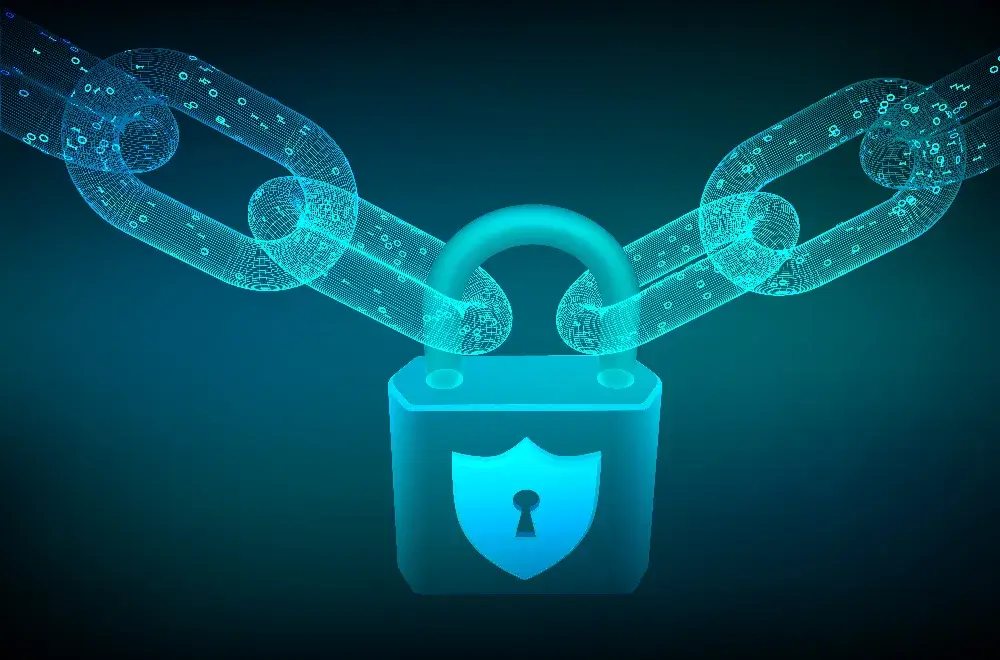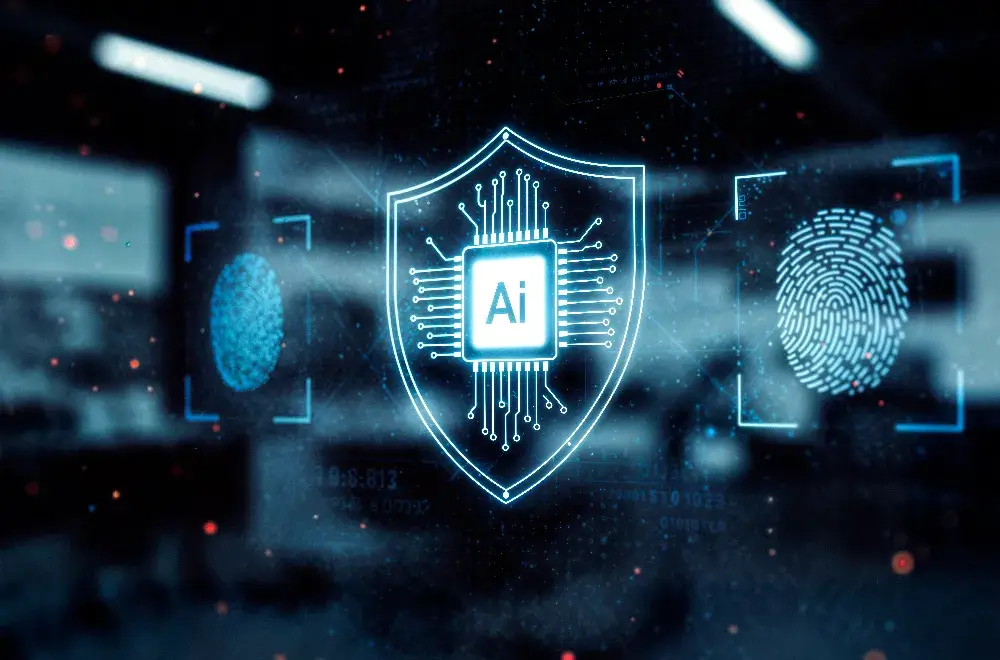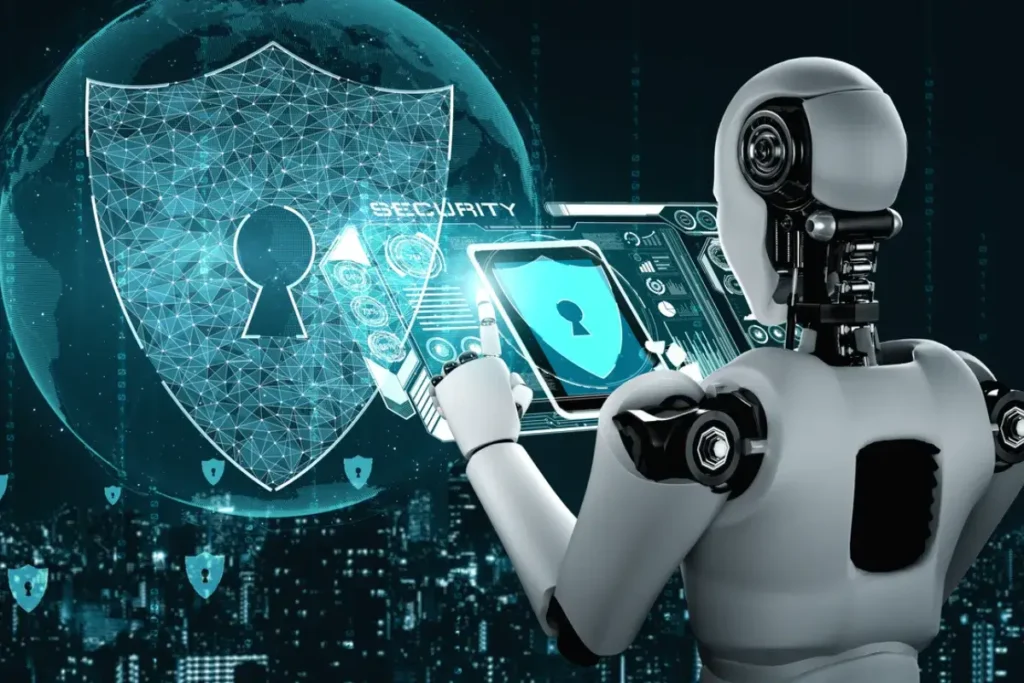Introduction: Why Blockchain Still Faces Security Threats
Blockchain is often praised for its decentralized structure, cryptographic protections, and transparent ledger system. It has generated the assumption that these qualities make it resilient against cyberattacks. Reality speaks differently, however. Sophisticated threats face blockchain networks as of 2025. From smart contract security vulnerabilities to private key thefts, hackers have found loopholes within decentralized ecosystems.
The traditional way to secure cyberspace with a processor chip in servers, scanners, etc. is generally reactive; hence, proactive security is introduced into the AI-based blockchain security. The AIBS doesn’t wait for the breach to happen-it predict, detects, and eliminates the threat-prevention before any damage occurs.
Understanding the Basics of Blockchain Security
In principle, the idea of blockchain security would rest on a triangle of cryptography, consensus mechanisms, and decentralized design. More often than not, however, weaknesses derive from components outside the blockchain protocol itself:
- Smart contracts coded improperly
- Inadequate management of security keys by users or by exchanges
- Phishing captures targeting wallet credentials
- 51% attacks on small blockchains
Even the greatest encryption can be bypassed by such flaws owing to human error or unpatched software. It is AI, which will guard with ever-watching eyes, learn, adapt, and react faster than any manual process.
The Increasing Number of 2025 Blockchain Hacks
Year 2025 saw tremendous increases in alarming numbers of attacks involving blockchains. Research of cybersecurity suggests that the major focus of these attacks is on decentralized finance (DeFi). Hackers have been using these means:
- Flash loans allow borrowers to carry out attacks that affect the margin of manipulation between prices of tokens.
- Manipulation of oracle information results in feeding false data into smart contracts.
- Cross-chain bridges that contribute to major losses in multi-million-dollar ranges.
Traditional security systems typically uncover breaches after the fact. The money vanishes, trust is lost, and recovery becomes nearly impossible. It requires proactive security – a shift brought forth by AI-powered blockchain security.
How AI Transforms Blockchain Security

Artificial Intelligence boosts security in the blockchain environment through the following three basic means:
- Continuous Monitoring – all AI tools systematically and automatically scrutinize the blockchain network, node, and smart contract for any unusual pattern in real time.
- Behavioral Anomaly Detection-Machine learning-based normal transaction flow tracking along with real-time detection of anomalies.
- Predictive Threat Intelligence-Identifies future vulnerabilities through reviewing previous attacks and recognizable patterns within existing and upcoming threats.
AI has evolved along with the threat landscape, keeping defenses relevant and effective as threats change.
Key Components of AI-Powered Blockchain Security
AI-enabled blockchain security has worked quite effectively; some of the keywords of the entire scheme are mentioned below:
| Component | Function |
|---|---|
| Machine Learning Models | Learn from historical blockchain data to detect anomalies. |
| Natural Language Processing | Monitors blockchain forums, GitHub repositories, and dark web chatter for early threat signals. |
| Automated Incident Response | Executes security measures instantly without waiting for human approval. |
| Predictive Analytics | Identifies vulnerabilities before attackers exploit them. |
| Smart Contract Auditing AI | Continuously analyzes deployed contracts for hidden bugs or exploits. |
The systems run around the clock, searching millions of data points for even the smallest anomalies.
Real-Time Threat Detection and Prevention
One very strong point is that AI-based blockchain safety measures for real-time detection. Traditionally, for example, it could take hours for such systems to even realize a breach. In milliseconds, AI does the same.
For example:
- Suppose a suspiciously large transaction suddenly occurs from a previously dormant wallet, AI immediately flags it.
- If failed login attempts are detected from different IP addresses, the system automatically locks the account.
That speed could determine millions of tokens lost or a quick stop of the theft altogether.
Predictive Analysis: Stopping Hacks Before They Start

Predictive analysis enables AI to anticipate attacks by examining patterns from prior breaches. By learning from:
- Transaction history
- Malware signatures
- SMart contract exploits
it can create a probability model of where and how the next attack might occur. With this forwards-looking approach, the developer and security teams can patch vulnerabilities even before hackers know they exist.
Case Studies Across Industries
Blockchain security is mostly associated with cryptocurrencies. However the security uses of blockchain technology are not limited to banking. AI-powered blockchain security has now begun to cover:
- Healthcare data on decentralized platforms for medical records
- Supply chain tracking for authenticating goods and preventing counterfeit products
- Intellectual property rights for artists and creators
- Public blockchains are used to hold government records for transparency and integrity.
All these industries benefit from AI’s ability to detect and neutralize risks without human intervention.
Challenges and Limitations of AI in Blockchain Security
Though AI-powered security has a lot going for it, it isn’t without challenges:
- False Positives – Uncharacteristically instigative algorithms might block appropriate transactions.
- Intensive Resource Use – AI models need enormous computing power with incessant updates.
- Availability Adversarial AI Attacks-Hackers may try to feed incorrect data to the AI system to circumvent defenses.
- Regulatory Compliance – Incorporation of AI in blockchain security should be aligned with the international laws on data privacy.
These challenges require continuous improvement and collaboration among AI experts and developers of blockchain systems.
The Future of AI-Powered Blockchain Security
In the future, emerging AI-enabled blockchain security would transform itself in various aspects:
- Decentralized AI Nodes: AI algorithms themselves would be hosted on blockchain nodes to prevent any single point of failure.
- Federated Learning: Security AI would be trained collaboratively across organizations without the need for sharing sensitive data.
- Quantum Resilient AI Models: To anticipate the future threat of quantum computation on the breaking of encryption.
As cyberattacks get more sophisticated, the collaboration between AI and blockchain will establish a new gold standard for safe decentralized systems.
Final Thoughts
Blockchain does not provide absolute security. The past few years have shown that even decentralized systems face sophisticated attacks. However, AI-powered blockchain security now enables the industry to take a proactive stance against these threats.
When organizations merge the adaptability of artificial intelligence with the transparency and decentralization of blockchain, they detect, predict, and prevent hacks before they happen. The future of digital security depends on anticipation, not reaction — and AI drives that future forward today.
FAQs
A1. AI-powered blockchain security combines artificial intelligence with blockchain technology to protect decentralized systems. It uses AI algorithms to detect anomalies, predict threats, and prevent attacks before they occur.
A2. AI improves blockchain security by continuously monitoring network activity, learning from historical data, and spotting suspicious behavior in real time. This allows faster detection and prevention of potential hacks.
A3. Yes. AI-powered blockchain security uses predictive analysis to identify vulnerabilities and alert developers before hackers can exploit them, reducing the chances of a successful attack.
A4. It can prevent smart contract exploits, phishing scams, flash loan attacks, cross-chain bridge hacks, and manipulation of decentralized governance systems.
A5. No. Beyond cryptocurrencies, AI-powered blockchain security also protects supply chain data, healthcare records, intellectual property rights, and government databases.
A6. The future will bring decentralized AI networks, privacy-focused federated learning, and quantum-resistant security models to combat next-generation cyber threats.

